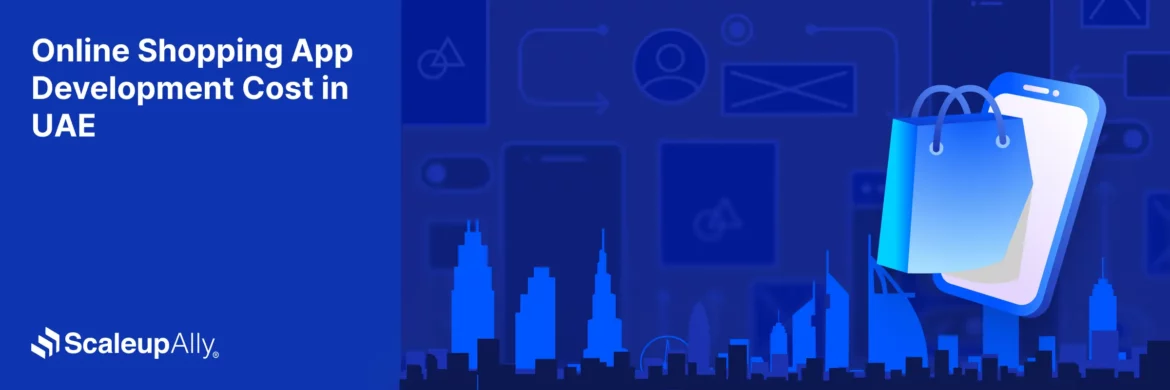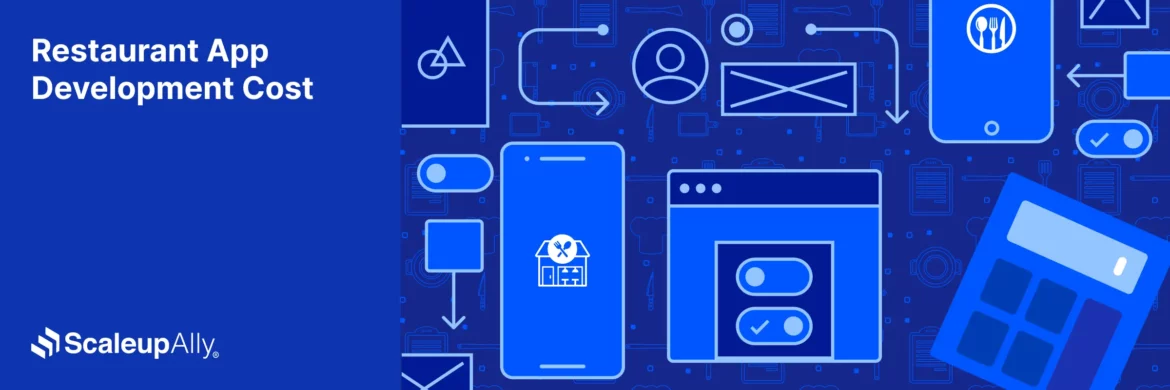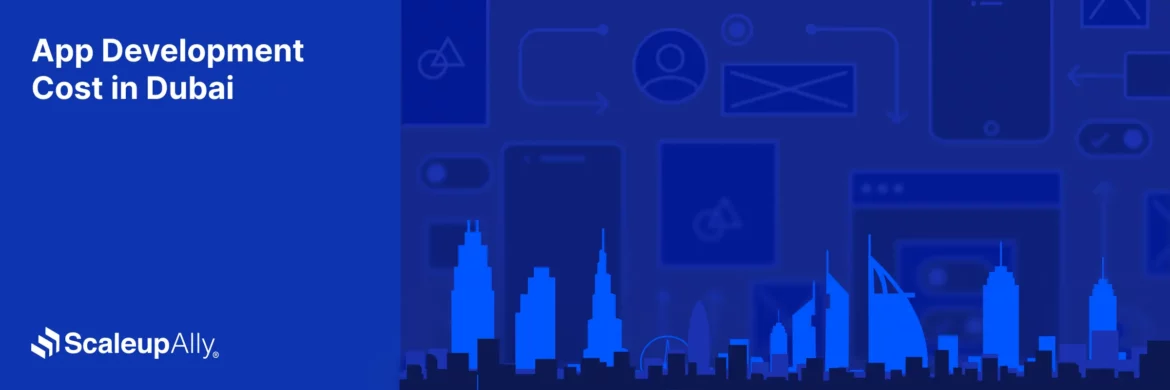![What Is the Cost of Developing an App in the UK? [Breakdown By App Type]](https://scaleupally.io/wp-content/uploads/2025/05/109.png)
What Is the Cost of Developing an App in the UK? [Breakdown By App Type]
Suprabhat Sen | October 8, 2025 , 17 min read
Table Of Content
Most companies have no clear idea what app development actually costs in the UK. There are varying quotes in every article on app development costs in the UK. The range these articles quote is wide, and somehow everyone’s confident they’re right.
This lack of clarity, apart from leading to budgeting issues, can also cause delays, rework, and sometimes the outright failure of promising ideas. You deserve better than guesses.
In this blog, we break down the app development cost in the UK by type, by complexity, and by the decisions that move your quote up or down.
Whether you’re building a basic utility app or a full-scale on-demand platform, you’ll walk away knowing what to expect and what to watch out for.
Key Takeaways
- App development in the UK typically ranges from £8,000 for basic apps to over £150,000 for enterprise solutions, with timelines from 3 to 12 months based on complexity.
- Location and expertise impact costs — London developers charge 30–40% more, and senior devs cost more but work faster.
- Complexity drives price — custom design, advanced features, backend systems, and compliance can sharply increase costs.
- Don’t overlook hidden expenses like maintenance (15–25% annually), testing, app store approvals, and third-party services.
- Save money by building an MVP first, using cross-platform tools, outsourcing selectively, and requesting transparent, itemized quotes.
Cost of App Development in UK: A Quick Overview
- Cost of App Development in UK: A Quick Overview
- Factors Influencing App Development Costs in UK
- How to Get an Accurate App Development Cost Estimate
- Cost Breakdown by App Type
- Cost of App Development by Operating System
- Hidden App Development Costs to Consider in UK
- How to Reduce the App Development Cost in the UK
- Conclusion
- Frequently Asked Questions
App development costs in the UK don’t follow a particular pattern strictly. They are based on who builds it, what it does, and how polished you need it. Several factors determine costs.
In the UK, the London-Manchester divide will greatly affect cost variance. A developer commanding £450/day in London might cost £320/day just two hours north. Geography shapes prices almost as much as functionality does. Here’s a table to give you a better picture:
| Complexity Level | Price Range | Timeline | Typical Features |
|---|---|---|---|
| Basic | £8,000-£25,000 | 1-3 months | Login, profiles, simple database, minimal design, limited platforms (iOS or Android) |
| Mid-range | £25,000-£60,000 | 3-6 months | Custom UI/UX, payment processing, basic API integrations, both platforms, limited backend complexity |
| Complex | £60,000-£150,000 | 6-12 months | Advanced security, multiple integrations, complex workflows, extensive database architecture, analytics |
| Enterprise | £150,000+ | 12+ months | Scalable infrastructure, AI/ML components, multiple user types, compliance features, global deployment |
Kindly note that these numbers don’t include post-launch costs. Maintenance typically adds 15-20% of the initial development cost annually. This is something you must not ignore.
One rule you must know when it comes to the cost of app development in the UK is that the more complex your app, the higher the price. Adding seemingly “small” features can trigger massive architectural shifts. A push notification system you assume to be simple might require weeks of backend work you never anticipated.
Factors Influencing App Development Costs in UK

No two apps cost the same to build. The same app concept could cost £15,000 or £150,000, depending on the path you choose. Before you commit to that contract, understand what’s driving those numbers:
1. Developer Experience Level
Junior developers bill at £250-350 per day in the UK market. Seniors bill £450-700. The gap is normal. A senior developer might solve in hours what takes a junior days of trial and error. The cheapest hourly rate often leads to the most expensive product.
London-based teams typically charge 30-40% premium over regional developers, though remote work has begun narrowing this gap post-pandemic.
2. Platform Choice
Native iOS development costs 10-15% more than Android in the UK market, despite Android’s larger user base. Why? The iOS ecosystem demands fewer device adaptations and stricter approval processes.
Going cross-platform with React Native or Flutter might save you 30% upfront but it could cost you double that in Year Two. Each platform you add multiplies complexity across your entire development stack.
3. Features and Functionality
Each feature you add interacts with existing components, which creates some form of complexity. Authentication systems that took 50 hours five years ago now require 150+ hours due to increased security standards.
Some features look simple on the surface, but the reality when coding them is not the same.
4. Design Complexity
Custom animations might look trivial in your mockups, but demand specialized developer skills that cost premium rates in the UK market. Each non-standard UI element adds testing hours across multiple devices and screen sizes.
The gap between a template-based design and custom UI can add £20,000+ to your budget while adding weeks to your timeline.
5. Backend Infrastructure
The visible parts of your app represent just 40-60% of development costs. The rest are Backend systems that users never directly interact with. UK compliance requirements for data handling add 15-25% to backend costs compared to less regulated markets.
Scalable architecture that prevents crashes during peak usage isn’t cheap, but neither is losing users to a frozen screen. Cloud services seem affordable until you calculate compounding monthly costs throughout your app’s lifecycle.
6. Testing and Quality Assurance
Thorough UK testing protocols cost more upfront but save exponentially in reputation damage and emergency fixes. Every skipped test is a ticking time bomb on your balance sheet. Manual testing across 30+ device combinations costs roughly £400-600 per testing cycle in the UK market.
Automation reduces long-term costs but requires significant upfront investment. The companies that skimp here are the ones writing public apologies later.
How to Get an Accurate App Development Cost Estimate
One of the biggest missteps businesses make is asking for a quote before they’ve clearly defined what they want. App development isn’t a one-size-fits-all product. It’s a service that needs the right inputs to deliver a precise output.
Here’s how to approach the estimation process so you’re not blindsided halfway through the project.
1. Define Your MVP Before Opening Your Wallet
Strip your concept down to its skeleton. What’s the one core function your app absolutely cannot live without? UK startups waste millions building features users never touch. Map user journeys on paper first. Each screen should serve a clear purpose. Challenge yourself to eliminate half your “essential” feature, then half again.
This process might save you £30,000+ in development costs while improving user experience. Counterintuitively, the fewer features you build initially, the more accurate your cost estimates become.
2. Create Detailed Wireframes That Leave Nothing to Interpretation
Words mean different things to different people. “Simple login system” could mean basic email authentication to you, but OAuth integration with multi-factor authentication to your developer. Visual wireframes eliminate these costly misunderstandings. UK development agencies report that clients with detailed wireframes receive estimates with 25-30% less variance than those with written descriptions alone.
Tools like Figma or Sketch let you create clickable prototypes that developers can price accurately. The £1,000-2,000 you might spend on professional wireframing often saves £10,000+ in development misalignments.
3. Request Itemized Quotes With Hourly Breakdowns
Generic quotes hide where your money goes. Demand line-item breakdowns with specific hourly allocations for each feature. This transparency serves two critical purposes: it forces developers to think through the actual work required, and it gives you leverage when scope discussions arise later. Compare these breakdowns across multiple agencies.
The outliers often reveal misunderstandings about your requirements. UK agencies that charge fixed prices without providing hourly breakdowns are essentially asking you to write blank checks. The agencies confident in their estimates won’t fear this transparency.
4. Factor In Post-Launch Costs From Day One
The app isn’t “done” when it launches. That’s just when the different expenses begin. Maintenance typically runs 15-25% of initial development costs annually. Server costs scale with users. iOS and Android platforms release updates that require compatibility fixes.
Calculate these ongoing costs as part of your TCO (Total Cost of Ownership). Budget for at least 18 months of post-launch expenses in your initial financial planning. The cheapest initial quote often leads to the most expensive app over its lifetime.
5. Build Contingency Into Your Budget—Then Add More
Development projects rarely finish under budget. They almost always exceed it. Smart project management builds in buffers: 20% minimum for straightforward projects, 35%+ for complex ones. This is reality based on thousands of UK app projects. Unknown factors emerge.
Requirements evolve as you see working prototypes. Technical challenges arise that neither you nor your developers could have anticipated. Without this buffer, you’re setting yourself up for painful compromises at critical junctures. Running out of money before reaching market fit is the leading cause of app project failures in the UK startup ecosystem.
Cost Breakdown by App Type

Below is a breakdown of typical app types and what you can expect to invest in each, based on industry averages and real-world project ranges.
1. E-commerce Apps
Base range: £40,000-£120,000
Payment gateways alone add £8,000-£15,000 to your build, with UK compliance requirements adding another layer of expense. Inventory management systems that prevent the customer service nightmare of overselling products cost another £12,000-£20,000.
Multi-currency support for UK companies post-Brexit adds approximately £10,000 to development costs due to fluctuation handling requirements.
Smaller merchants often underestimate the cost of product search functionality. Basic keyword search might cost £5,000, but the intelligent search with filtering and sorting that converts browsers to buyers is a £15,000+ investment in the UK market.
2. Social/Community Apps
Base range: £35,000-£200,000+
They’re worthless without users, but each additional user increases your burden. Basic algorithms for content moderation tools start at £15,000, but the systems that prevent legal liability cost closer to £50,000. Real-time features (messaging, notifications) add £20,000-£30,000 but create exponential server costs as you scale.
UK data protection requirements around social connections and privacy controls add roughly 20% to development costs compared to less regulated markets. The hard truth is that the “TikTok for X” concept that sounds simple requires enterprise-level infrastructure to handle media processing at scale.
3. Healthcare/Medical Apps
Base range: £70,000-£300,000+
GDPR was expensive. NHS Digital integration requirements alone can add £30,000+ to development costs.
Security implementations for patient data protection typically consume 25-30% of total development budgets. This is more than UI and UX combined. Certification processes add months to timelines and £10,000-£20,000 in specialized legal and consulting fees.
Features that might cost £15,000 in a standard app often require £40,000+ in healthcare contexts due to documentation, testing, and regulatory adaptation requirements. Even “simple” medication tracking apps require complex validation systems that prevent dangerous usage patterns. This adds £25,000+ to development costs.
4. Financial/Banking Apps
Base range: £100,000-£500,000+
Financial apps in the UK face the perfect storm of regulatory requirements and zero-tolerance security demands. Authentication systems alone typically cost £30,000-£50,000. We are not talking about the basic login screens of simpler apps, but the military-grade systems that prevent account compromises.
FCA compliance features add approximately 35% to development costs compared to non-financial applications. Transaction monitoring systems required by UK regulations start at £40,000 for basic implementation.
Every feature in financial apps requires 2-3x more testing than equivalent features in other categories. A £10,000 feature becomes a £25,000 feature simply due to the testing rigor required. The most expensive line item? Often, it’s the penetration testing and security audits needed before launch, ranging from £20,000-£50,000 for comprehensive coverage.
5. Gaming Apps
Base range: £30,000-£350,000+
The quality bar for UK gaming apps has skyrocketed. Users now expect console-quality experiences on mobile devices. Physics engines alone can add £20,000+ to development costs. Monetization systems (the actual profit generators) require another £15,000-£25,000 for implementation that converts without alienating players.
Game balancing often requires specialized developers commanding £500+ daily rates in the UK market. Every additional game environment or level multiplies testing requirements across devices.
Cost of App Development by Operating System
Choosing the right platform (iOS, Android, or both) depends on your budget. The mobile app development cost in the UK can vary depending on the operating system you’re building for. And yes, the differences can be significant, especially when you scale.
Here’s a breakdown:
1. iOS Development
Base development rates in the UK run 10-15% higher for iOS than Android, despite requiring fewer device adaptations. The average iOS developer commands £500-650 per day in London, £420-520 outside major tech hubs.
The financial upside is that iOS users spend 2.3x more on in-app purchases than Android users. This potentially justifies the premium development costs for monetization-focused apps.
The technical tax comes from Apple’s stringent approval process. UK development houses typically allocate an additional £3,000-7,000 for navigating App Store requirements compared to Google Play submissions. Each rejection adds approximately one week to your timeline and £1,500-3,000 in additional development costs.
The platform with stricter technical requirements and higher development costs also imposes a 30% commission on your revenue. Factor this permanent tax into your financial projections before committing to the Apple ecosystem.
2. Android Development
The average Android developer bills at £450-580 in London, £380-480 in regional tech centers.
The savings vanish when you factor in device fragmentation. Testing across the minimal viable set of Android devices adds approximately 30% to QA costs compared to iOS projects.
Android users cost less to acquire. For mass-market apps with thin margins, this customer acquisition advantage can outweigh the additional development complexity.
Material Design guidelines provide structure but limit creative expression compared to iOS. Deviating from these standards costs significantly more. Unique Android interfaces typically add £10,000-15,000 to development costs while increasing future compatibility risks.
3. Cross-Platform Development
React Native and Flutter promise to write once, deploy everywhere. A £120,000 dual-platform native project might cost £85,000-95,000 using cross-platform frameworks.
The catch appears in Year Two. Cross-platform apps typically cost more to maintain than native equivalents. Operating system updates break functionality more frequently. Performance optimization becomes increasingly expensive as your user base grows.
UK agencies report that heavily customized interfaces or hardware-intensive features often require native code bridges anyway, eliminating much of the cost advantage while adding technical complexity. The savings gap narrows as app complexity increases.
The binary decision isn’t always necessary. Some UK startups successfully employ hybrid strategies. Building core features in shared code while implementing performance-critical sections natively. This approach typically saves 15-20% compared to fully native development while avoiding the worst maintenance pitfalls.
4. Web Apps
Progressive Web Apps (PWAs) represent the budget option, typically costing 40-60% less than equivalent native apps in the UK market. A £80,000 native app project might cost just £35,000-45,000 as a PWA.
The massive tradeoff is limited hardware access, no app store presence, and reduced performance. UK studies show users spend 3.5x more time in native apps than web equivalents. Conversion rates for purchases run 1.5-2x higher in native interfaces.
For internal business applications or content-focused services with limited interactivity needs, the financial calculation often favors web apps. The absence of app store commissions (saving 15-30% on each transaction) can significantly improve unit economics for transaction-heavy businesses.
Use PWAs as market testing platforms before committing to native development. This will allow validation of core concepts for 40-50% of the cost, reducing the financial risk of building features users don’t want.
Hidden App Development Costs to Consider in UK
While developers focus on building features, these hidden expenses can quietly drain your reserves:
- App store submission isn’t just annual fees (£79 for Apple, £25 for Google), it’s the £1,500-3,000 for properly preparing materials and addressing rejections.
- Maintenance isn’t optional. Budget 15-25% of initial development costs annually just to keep your app functioning as platforms evolve.
- Server costs scale with success. Expect £1,500-3,000 in monthly cloud charges after your app with 50,000 monthly users attracts more users.
- Third-party services start free but become expensive dependencies. Payment processors (1.5-3.5% per transaction), maps APIs, and authentication services quickly add £800-1,500 monthly.
- Regulatory compliance isn’t one-and-done. Evolving UK data protection laws demand ongoing updates costing £5,000-15,000 annually.
- Analytics tools (£300-1,000 monthly) seem expensive until you waste £10,000 building features nobody wants.
- Security audits (£5,000-25,000) look pricey until compared to the £3.1 million average breach cost in the UK market.
How to Reduce the App Development Cost in the UK
App development isn’t cheap, but there are ways to cut costs without cutting corners.
- Start with an MVP. Instead of building the full product, launch a Minimum Viable Product with just the core features. It gets you to market faster and lets you test demand before committing to full-scale development.
- Choose cross-platform frameworks. Technologies like Flutter or React Native let you build for both iOS and Android using one codebase. This saves time and money on development and maintenance.
- Outsource strategically. UK-based agencies offer quality, but if your budget is tight, consider reputable hybrid models: project managers in the UK, development offshore. You’ll still get clear communication but at a lower rate.
- Use existing tools. Don’t reinvent the wheel. Use pre-built components, open-source libraries, and third-party integrations to speed things up.
- Finally, partner with the right app development team. A transparent developer won’t just build, they’ll guide you on how to get the most out of your budget.
Sometimes, spending wisely is better than spending less.
Conclusion
Understanding the app development cost breakdown in the UK is less about finding a flat rate and more about grasping the variables that shape your budget from the type of app you’re building to the platform you’re targeting. Smart decisions early on can mean the difference between a bloated project and a streamlined, high-performing product.
If you’re thinking of building an app but aren’t sure where to begin, don’t rush into quotes just yet.
Start with this guide: Mobile App Development Budget: A Comprehensive Guide for Non-Tech Founders. (It walks you through the essential factors to consider and provides valuable insights that will help you create a well-rounded budget for your app development.)
If you want something more tailored, book a free 30-minute consultation with our development team at ScaleupAlly to get a customized cost breakdown for your specific app concept. We’ll identify potential budget pitfalls and optimization opportunities unique to your project requirements.
We hope we answered your question, “How much does app development cost in the UK?” in this blog. Your app is an investment. Make every pound count.
Frequently Asked Questions
Q: How Long Does It Take to Develop a Mobile App in the UK?
App development in the UK typically takes 3 to 9 months. Timelines vary based on features, complexity, team size, and platform. MVPs can be built in 3–4 months; full-featured apps take longer.
Q: How much does it cost to put an app on the App Store UK?
Publishing on the Apple App Store requires a £79/year developer subscription (as of 2025). This fee allows you to distribute apps worldwide, including in the UK. There are no per-app publishing fees.
Q: How can UK businesses optimize app development costs?
UK businesses can reduce app costs by starting with an MVP, choosing cross-platform development, reusing components, and avoiding scope creep. Working with an experienced, transparent development partner also helps minimize inefficiencies and unnecessary spending.
Q: How does UK regulation affect app development?
UK regulations can significantly raise app development costs due to stringent data protection, security, and compliance requirements. Meeting standards set by GDPR, the FCA, and NHS Digital can add 15–35% to project budgets. This is largely because compliance demands robust encryption, thorough testing, and regular updates to ensure ongoing adherence.
Related Blogs

Online Shopping App Development Cost in UAE | Pricing & Factors Explained
Understand UAE online shopping app development costs in 2025 with pricing ranges, influencing factors, hidden fees, timeframes, and expert savings tips.
Suprabhat Sen
Nov 29 ,
13 min read

Restaurant App Development Cost [Breakdown, Key Factors & Pricing Explained]
Discover restaurant app development cost. Explore pricing by complexity, feature-wise cost breakdown, and smart ways to reduce expenses.
Suprabhat Sen
Nov 29 ,
11 min read

App Development Cost in Dubai: Detailed Pricing Breakdown & Cost Factors
Discover app development cost in Dubai — staged price breakdown by app type, key cost drivers, hidden fees, and tips to lower your project spend.
Suprabhat Sen
Nov 29 ,
12 min read


